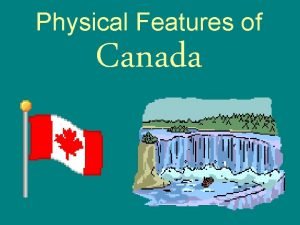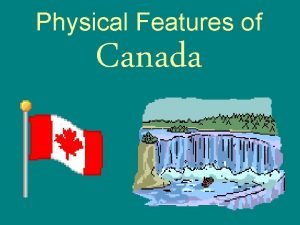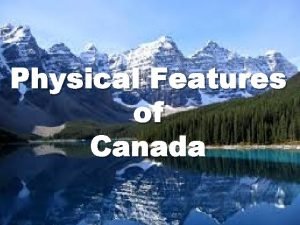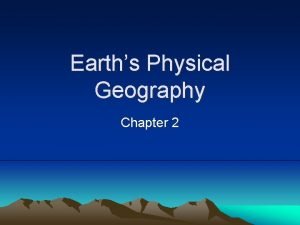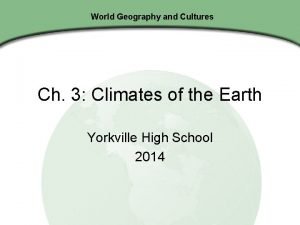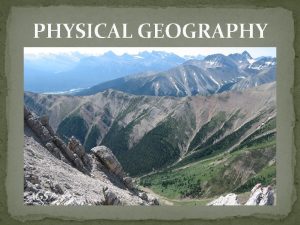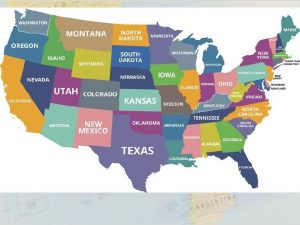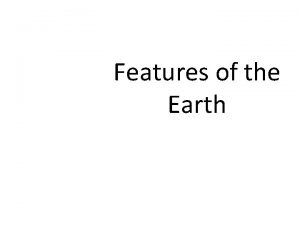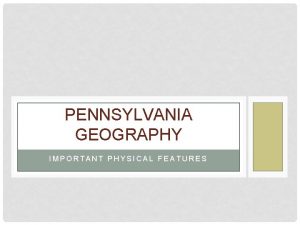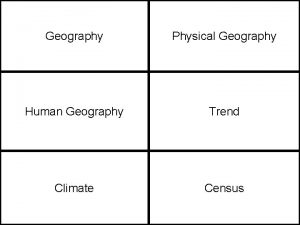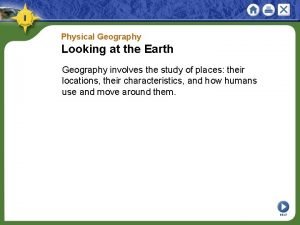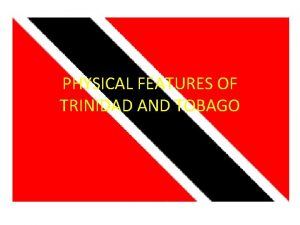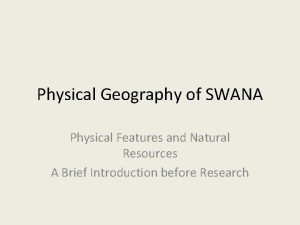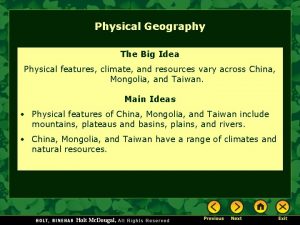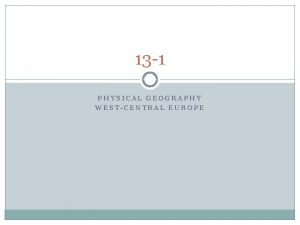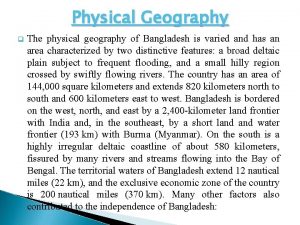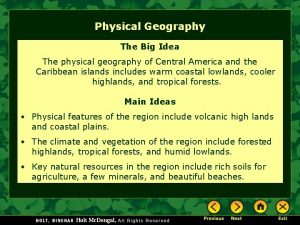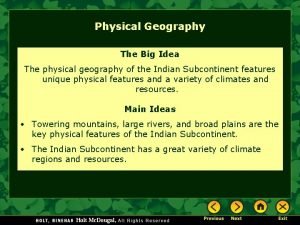PHYSICAL GEOGRAPHY OF THE EARTH IMPORTANT PHYSICAL FEATURES




















- Slides: 20

PHYSICAL GEOGRAPHY OF THE EARTH IMPORTANT PHYSICAL FEATURES OF NORTH AMERICA



ROCKY MOUNTAINS • Only 80 million years old, this western range gets its name from the shape of its peaks.

APPALACHIAN MOUNTAINS • North America’s older mountain ranges rise near the east coast; over 400 million years old, they are worn down and rounded due to weathering.

CANADIAN SHIELD • a raised but relatively flat plateau; extends over eastern, central, and northwestern Canada

SIERRA MADRE MOUNTAINS • Part of the Western ranges, these mountains stretch from the southwestern United States to Honduras.

CASCADE MOUNTAINS • The youngest of the mountain ranges, with some peaks only a million years old; runs through the Pacific Northwest

THE GREAT PLAINS • “Breadbasket of North America, ” grassland region of North America, between the Rocky Mountains and the Mississippi River; used for beef and dairy cattle and for growing of wheat and corn.

THE GREAT LAKES • A series of interconnected freshwater lakes located in the upper mid-east region on the Canada–United States border, connects to the Atlantic Ocean through the Saint Lawrence River. Superior, Michigan, Huron Erie, and Ontario

MISSISSIPPI RIVER SYSTEM • The system consists of the river itself and its major tributaries: the Arkansas, Illinois, Missouri, Ohio and Red rivers.

THE PIEDMONT • Geographic region in the east; lying between the Appalachian Mountains (west) and the Atlantic Coastal Plain (east)

THE GULF- ATLANTIC COASTAL PLAIN • Extends from river, marsh, and wetland regions east of the mountains toward the sandy beaches of the Atlantic coast.

NORTH AMERICAN TUNDRA • Stretching along the northern borders; low temperatures and precipitation levels hinder tree growth. The tundra is characterized by permafrost—soil that is frozen for two or more years.

ST. LAWRENCE SEAWAY • A large river in the middle latitudes of North America; flows in a roughly north-easterly direction, connecting the Great Lakes with the Atlantic Ocean.

GULF OF MEXICO • An ocean basin and a marginal sea of the Atlantic Ocean, largely surrounded by the North American continent; often referred to as the "Third Coast"

HUDSON BAY • A large body of saltwater in northeastern Canada; the second-largest bay in the world.

ARCTIC OCEAN • The smallest and shallowest of the world's five major oceans; located mostly in the north polar region in the middle of the Northern Hemisphere; almost completely surrounded by Eurasia and North America.

PACIFIC OCEAN • The largest and deepest of the Earth's oceanic divisions. It extends from the Arctic Ocean in the north to the Southern Ocean in the south and is bounded by Asia and Australia in the west and the Americas in the east.

ATLANTIC OCEAN • The second largest of the world's oceans; separates the "Old World" from the "New World, " connected in the north to the Arctic Ocean, to the Pacific Ocean in the southwest, the Indian Ocean in the southeast, and the Southern Ocean in the south.
 Physical features in canada
Physical features in canada 5 physical features of canada
5 physical features of canada Physical features of canada
Physical features of canada Earth physical features
Earth physical features Earths physical features
Earths physical features Earth's physical geography chapter 2
Earth's physical geography chapter 2 Example of a news story
Example of a news story From most important to least important in writing
From most important to least important in writing Least important to most important
Least important to most important Virginia's water features
Virginia's water features 80186 microprocessor
80186 microprocessor The study of human and nonhuman features of earth
The study of human and nonhuman features of earth World geography chapter 3 climates of the earth answers
World geography chapter 3 climates of the earth answers Canada physical regions
Canada physical regions Ap human geography frq examples
Ap human geography frq examples 5 themes of geography ap human geography
5 themes of geography ap human geography Proruption ap human geography
Proruption ap human geography Hình ảnh bộ gõ cơ thể búng tay
Hình ảnh bộ gõ cơ thể búng tay Bổ thể
Bổ thể Tỉ lệ cơ thể trẻ em
Tỉ lệ cơ thể trẻ em
